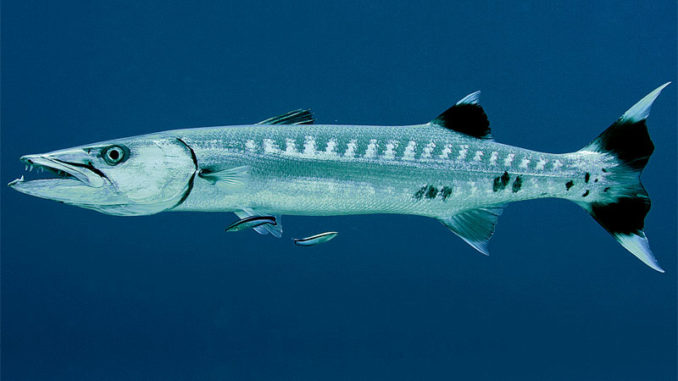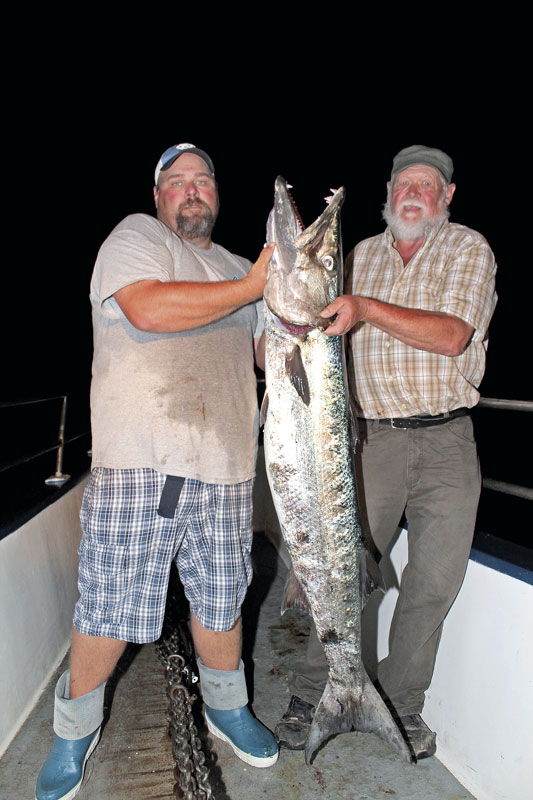
Vicious predator swims in most of the world’s oceans, and is at home anywhere
The great barracuda, Sphyraena barracuda, is a large, missile-shaped predator found throughout the world’s oceans. It is a menacing-looking fish, with a mouth full of sharp teeth, and it lives up to its looks when hungry or provoked.
In the United States, it’s commonly referred to simply as barracuda, because the great barracuda is the only species of its family that is numerous enough to draw attention from anglers.
It varies widely in its coloration, depending on the water where it’s living. Most are blue-gray along the back, fading to silvery white along the bottom of their bodies. They often have a row of dark bars and black blotches along their sides.
Barracudas have two dorsal fins; the second one is usually dark purple to black with a white tip. The anal and caudal fins match the second dorsal. They have powerful jaws, and their teeth look like fangs. Their teeth are so long that they have holes in their mouths opposite the teeth, allowing the fish to close its mouth without biting itself.
These fish are commonly seen and caught by anglers around oil rigs, wrecks and reefs, natural and artificial. Most are caught offshore, but it’s not uncommon for anglers to catch them around nearshore structure.
Barracudas have a large swim bladder that allows them to hover close to the surface without moving. This makes them deadly to other fish, which happen upon them without being alerted to their presence. Once those fish are in range, the barracuda launches into action with a sudden burst of speed, capturing its prey with a quick slash.
Opportunistic
A barracuda’s diet consist of any living creature in the sea. They are known to attack fish larger than themselves, biting them into chunks. Barracudas aren’t very mobile, but they can exceed speeds of 27 mph in short bursts. They hunt solo for the most part, but fisheries biologists have observed several working together to herd schools of prey.

Aside from hunting their own prey, barracudas will often eat the scraps of other predator fish. They are known for hanging around spear fishermen in hopes of stealing their speared fish. On rare occasions, they have bitten spear fishermen while attempting to nab their catch.
Anglers targeting barracuda have the most luck with live bait, but artificial lures retrieved very quickly will also draw strikes from these fish.
Barracuda are rarely misidentified, but they are sometimes mistaken for king mackerel or wahoo. They are often called “cudas.” Another nickname is “giant sea pike.”
Louisiana’s state-record barracuda, caught by A.C. Mills in August 1970, weighed 50 pounds.
The world-record barracuda weighed 87 pounds, 3 ounces. Christian Loranger caught it in September 2012 off the coast of Christmas Island, Kiribati.
The post “Species Spotlight: Great barracuda” first appeared on MS-Sportsman.com.


